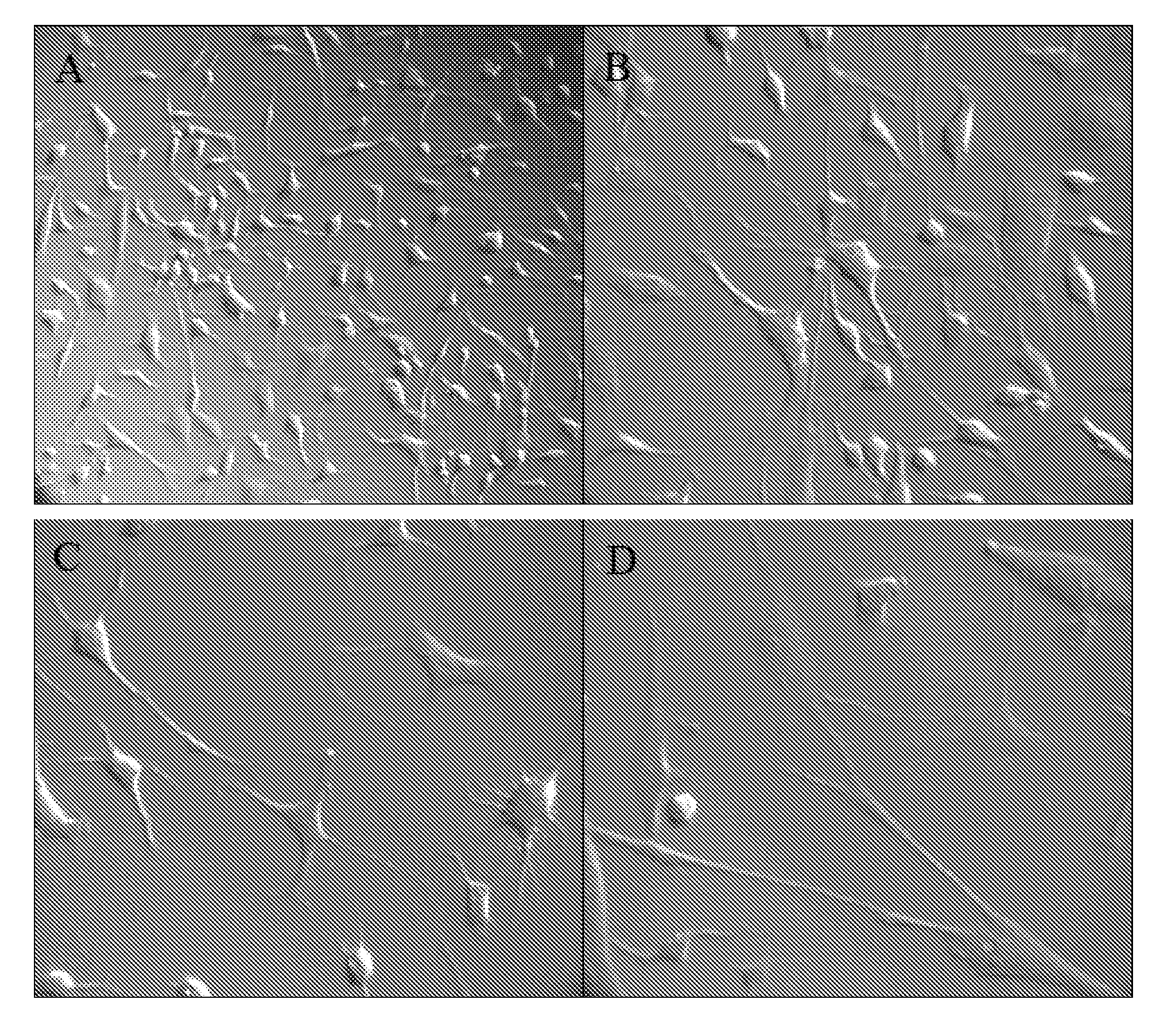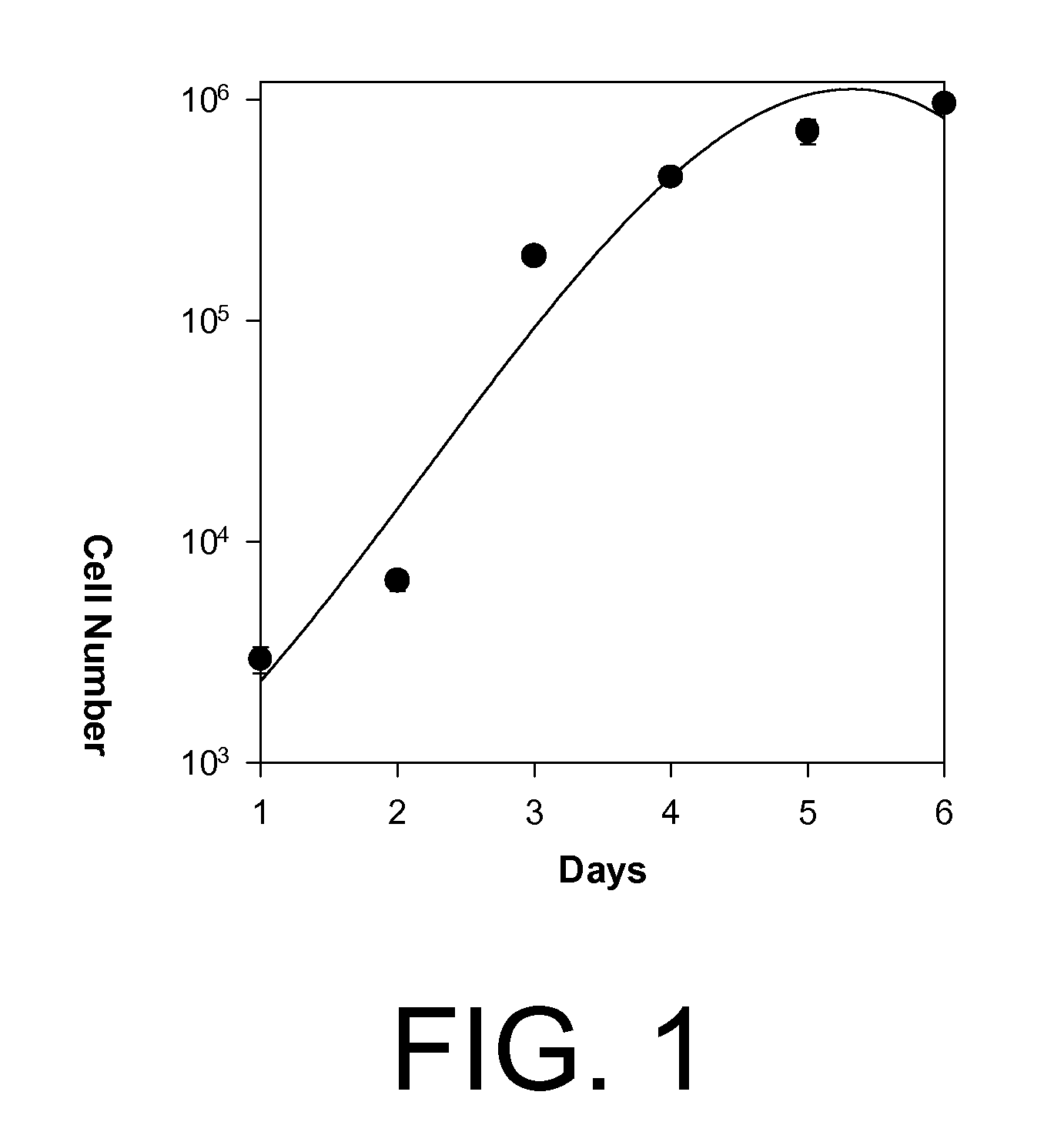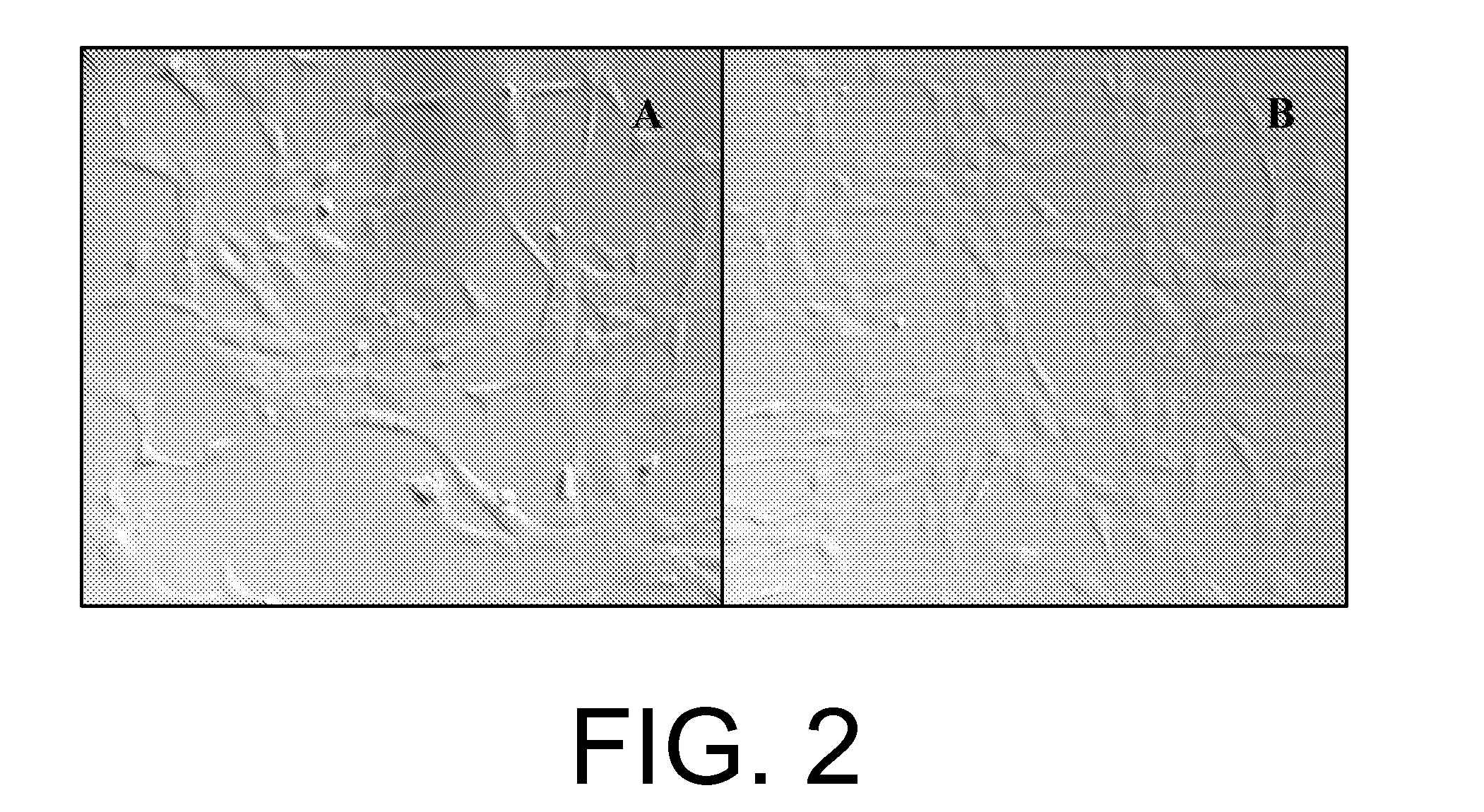Method of isolation and use of cells derived from first trimester umbilical cord tissue
a technology of stem cells and umbilical cords, applied in the field of human stem cells, can solve the problems of limited differentiation potential of adult stem cells, and limited use of adult stem cells
- Summary
- Abstract
- Description
- Claims
- Application Information
AI Technical Summary
Benefits of technology
Problems solved by technology
Method used
Image
Examples
example 1
Materials—Reagents
[0048]A non-exhaustive list of possible reagents to use with the method of the invention is provided below. Penicillin-streptomycin liquid containing 5000 U of penicillin and 5000 mg of streptomycin / mL (GIBCO; cat. no. 15070-63), aliquot and store at −20° C. Amphotericin B solution (250 μg / ml, Sigma; cat. no. A-2942), aliquot and store at −20° C. Dulbecco's phosphate-buffered saline (PBS) (+) (GIBCO™; cat. no. 14040-133), store at 4° C. Sterile water, tissue culture grade (GIBCO; cat. no. 15230-162), store at 4° C. Collagenase Type 1 (GIBCO; cat. no. 21985-023), store at 4° C. α-MEM (GIBCO; cat. no. 12571). Defined fetal bovine serum (HyClone, Logan, Utah; cat. no. 30070-03) aliquot and store at −20° C. Trypsin 0.25% / EDTA (GIBCO; cat. no. 25200-056), store at −20° C. DMSO (Sigma™, cat. no. D-5879), store at room temperature. Any additional and acceptable reagents may be used.
Materials—Equipment
[0049]A non-exhaustive list of possible equipment to be used in the meth...
example 2
[0064]Stem cells were isolated and expanded from the first trimester human umbilical cord (HUCPV), demonstrating that the cells have embryonic stem cell characteristics. These cells can express embryonic stem cell markers from passage 0 to 16 and have the ability to self-renew.
[0065]First trimester HUCPV cells were differentiated in vitro and examined for the expression of tissue-specific markers in the differentiated cells.
Method
[0066]Perivascular cells were isolated from first trimester umbilical cords and were expanded in α-MEM containing 5-10% of FCS. These cells were grown in a suspension to induce their differentiation into EBs. EBs were transferred onto coated plates and cultured under appropriate condition. Morphology change was examined in these differentiation conditions. Dispersed EBs and differentiated cells were characterized using immunocytochemistry (ICC). RT-PCR assays were used to detect the presence of several tissue-specific molecular markers.
Results
[0067]FIG. 7 s...
PUM
| Property | Measurement | Unit |
|---|---|---|
| temperature | aaaaa | aaaaa |
| time | aaaaa | aaaaa |
| freezing | aaaaa | aaaaa |
Abstract
Description
Claims
Application Information
 Login to View More
Login to View More - R&D
- Intellectual Property
- Life Sciences
- Materials
- Tech Scout
- Unparalleled Data Quality
- Higher Quality Content
- 60% Fewer Hallucinations
Browse by: Latest US Patents, China's latest patents, Technical Efficacy Thesaurus, Application Domain, Technology Topic, Popular Technical Reports.
© 2025 PatSnap. All rights reserved.Legal|Privacy policy|Modern Slavery Act Transparency Statement|Sitemap|About US| Contact US: help@patsnap.com



